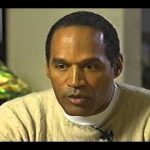
(I have been writing stories about some of the stories I have covered, so far, in my career. Each one taught me something about the profession or myself)
Yes, I Interviewed O.J. Simpson! And yes, I have an opinion about who killed Nicole Brown Simpson and Ronald Goldman. First, let me share with you the story of how I got the chance to sit down with the man accused and then acquitted of murder. I was living in Elizabethtown, Kentucky where my family and I had just purchased a radio station. It was a major change of life after living and working in Los Angeles for the past 15 years. I went from major market news anchor to local radio station owner. It was a real challenge and we loved it.
It was just before Christmas of 1995. The big story that fall was the Simpson trial. He was found not guilty. Johnnie Cochran said about the bloody glove, “if it doesn’t fit, you must acquit.” The jury did.We had the entire staff of WRZI radio at our rented home on the north side of Elizabethtown. It was the first radio staff Christmas party. We were excited and proud and just getting to know our new family.
About an hour into the party my phone rang. When I answered I heard the voice of a man who I had played golf with in L.A. Tony Hoffman was known as the “King of Infomercials”. He planned and produced those half hour TV ads that sold all kinds of products from kitchen devices to hearing aids. Tony knew I had left L.A. for Kentucky and the radio business, but he said he had a job offer for me. He wanted to know if I was interested in interviewing O.J. Simpson. I didn’t know what to say. My house was full of my new work family and that was the priority now, but the prospect of sitting down with one of the most sought-after news makers in the past decade was too much to ignore. The deal was simple. Tony had been hired by Robert Kardashian to produce a video. Some of the video would include O.J. leading viewers on a tour of his Rockingham mansion and talking about the night Nicole was killed. However, most of the video would be a 90-minute, unedited, uncensored interview with Simpson. The video would be sold by mail-order directly to people interested in hearing his story. I hung up the phone and was stunned. I went back to the party, but my mind was elsewhere.
The next morning, I called my friend and former agent, George Bane. He was the man who managed my TV news career in Los Angeles for the previous decade and a half. I trusted him. He said it was a great opportunity but only if we controlled the interview. We needed to make sure it was journalistically sound.
There was no Facebook in 1995. YouTube was not on the radar. This pre-produced video to distribute journalism was going to be controversial. We just didn’t realize HOW controversial. George negotiated the deal. 90 minutes with O.J. and I controlled the questions. They agreed. We wanted just two camera people, O.J. and me in the room so no one could give him any signals about answers. I wanted it just to be me and him, face to face. Also, we needed to be able to ask anything. Again, agreed. I was hired by Tony Hoffman’s production company as a freelance journalist to interview the man everyone wanted to interview. The plans were made for a trip to Los Angeles in early January. It was difficult, but I had to keep quiet about it in Elizabethtown, Kentucky. The story would get out soon enough that a local radio station owner was about to make headlines again.
I arrived in L.A. and went to the Holiday Inn at Sunset Blvd. and the 405 freeway. I spent the evening studying court transcripts and videos. This was probably going to be the first time and, maybe the only time, O.J. Simpson would be questioned directly about what happened. I wanted it to be good. The next morning there was a knock on the door. The man said the driver was ready to take me to O.J.’s Rockingham estate. When I got downstairs, there was a van with the windows blacked out. Reporters had gotten word that there was to be an interview, but they didn’t know who was going to ask the questions. The secret didn’t stay a secret for long. Rockingham was a zoo. In the den just off the kitchen, the TV production crew had the table and the lights ready to go. There were still photographers from People Magazine. They got exclusive access to the video shoot. George Bane, my agent, went down the hallway into the production room next door to the room used by Kato Kaelin. We heard all about it during the trial. I sat down at the small table to wait for O.J. To my left in a glass case was the Heisman Trophy.
He came in. We said hello. I shook his hand. I won’t go into everything in the interview. It’s available for you to see on YouTube. I hope you watch it. It’s good journalism. https://www.youtube.com/watch?v=biwNu5IXI2M
After the interview I was exhausted. My agent took a video copy to put in his safe to ensure O.J.’s people would not edit it in any way before it’s release. We were confident our interview was solid and credible. I asked him if he killed his wife and Ron Goldman. If you watch the interview you can look into his eyes and decide for yourself if he’s lying. I was shuttled to the airport. The plane took off and several hours later I was back in Elizabethtown, Kentucky. It was only the beginning of a swirl of controversy. My small-town radio station became “ground zero” for the controversy over why I agreed to do the interview instead of allowing a major TV network to do it. I agreed because I was given access. I did the right thing. I got the scoop.
Geraldo Rivera was very angry, maybe jealous. Dateline did a story about how I allegedly “sold out” and allowed “the killer” O.J. to make money off the video. I reminded them that he was acquitted. I had to respect the jury’s decision. I just wanted people to have the chance to hear him answer some hard questions.
Someday I will write an ethics essay about this project and the journalism ethics involved. For now, I just wanted you to know what happened. It was a tornado of demands for interviews. It was regular people calling to say I sold out. It was the people of Elizabethtown wondering, sometimes out loud, what the hell was going on at that new radio station on Dixie Highway.
George Bane always used to tell me, “make a splash”. I had done that.
Now, when I am asked “so, did O.J do it?” I have an answer. When we see each other next time, I will tell you that story.
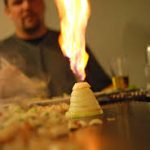



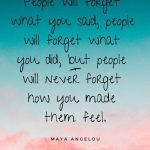
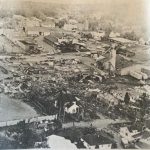
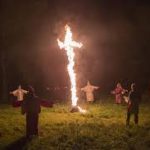
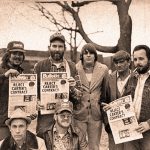


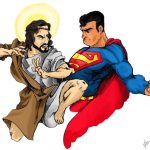
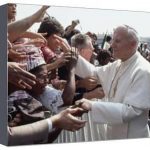
Recent Comments